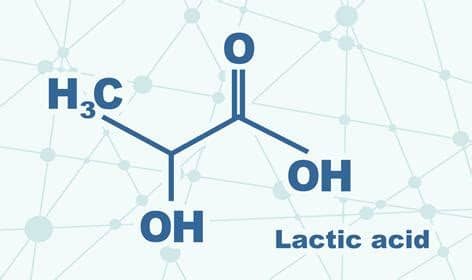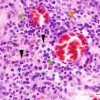
Understanding Lactic Acid in Pigeons
Understanding Lactic Acid Buildup in Racing Pigeons
Racing pigeons are elite athletes of the avian world. With their incredible endurance and speed, they face intense physical challenges—especially on race day. But beneath their powerful wings and determined hearts lies a hidden hurdle: lactic acid buildup. This natural byproduct of strenuous exercise can hinder a pigeon’s recovery, cause muscle fatigue, and negatively impact future race performance.
In this blog post, we’ll explore what lactic acid is, how it affects racing pigeons, and most importantly, how to manage and reduce its effects for optimal health and performance.
What Is Lactic Acid and Why Does It Matter in Pigeons?
Lactic acid is a substance produced by muscles during intense anaerobic activity—when oxygen is limited, and the body needs to generate energy quickly. In pigeons, this happens during high-effort flights, particularly in long-distance or sprint races.
When oxygen supply can’t meet demand, the body converts glucose into energy through a process called anaerobic glycolysis. The downside? It leaves behind lactic acid, which accumulates in the muscles.
The Problem with Lactic Acid Accumulation
When too much lactic acid builds up, muscles become acidic, leading to:
- Muscle fatigue
- Heavy breathing and wing droop
- Slower returns to the loft
- Prolonged recovery times
Without proper management, this can affect your pigeon’s performance not just in one race but across the racing season.
Key Symptoms of Lactic Acid Overload in Racing Pigeons
Recognizing the signs of lactic acid stress can help you intervene early. Watch for:
- Labored breathing post-race
- Reluctance to fly
- Delayed return from races
- Lethargy or wing hanging
- Poor appetite and hydration
These symptoms often mimic other conditions, so it’s important to use diagnostic testing and observation to rule out disease or dehydration.
Why Lactic Acid Is Worse in Young or Untrained Birds
Young pigeons or those inadequately trained are more likely to experience lactic acid buildup. Their muscles are less conditioned to aerobic flight, meaning they switch to anaerobic energy production faster, leading to:
- Early fatigue
- Risk of cramping
- Delayed muscle recovery
Gradual, well-structured training can build lactic acid tolerance, allowing your birds to fly longer before fatigue sets in.
Top Causes of Lactic Acid Buildup in Racing Pigeons
- Intense anaerobic exercise
- Dehydration
- Poor ventilation or hot weather
- Overtraining without rest days
- Lack of post-race recovery support
Each of these factors plays a role in reducing oxygen delivery and increasing metabolic stress on your birds.
Managing Lactic Acid: Effective Treatment and Prevention
1. Post-Race Recovery Supplements
After every race, your pigeons need more than just rest. Supplementing with products that restore electrolyte balance and buffer acid is key.
Try: PHP Recovery Boost or PHP Electro Boost
- Contains electrolytes to balance fluids
- Includes antioxidants to neutralize stress
- Aids in rapid muscle recovery
2. Feed for Energy and Endurance
A poorly balanced diet can make your birds prone to quick energy depletion and acid production.
Focus on:
- Energy-rich grains (corn, safflower, hemp)
- Organic acids and B-complex vitamins
- Amino acids for muscle repair
3. Hydration and Electrolytes
Water plays a crucial role in flushing out lactic acid and cooling the body. Always provide clean, fresh water before and after flight.
Add:
- Electrolyte powders to support cellular balance
- Glucose for immediate energy
4. Avoid Overtraining
Too much intensity without rest days leads to burnout. Monitor your pigeons for signs of exhaustion and rotate flight schedules.
Tip: Introduce interval training and give a full day off after tough races.
5. Antioxidants to Reduce Cellular Damage
Free radicals produced by stress and acid buildup can damage tissues. Antioxidants combat this oxidative stress.
Use supplements with:
- Vitamin E
- Vitamin C
- Selenium
The Role of Diagnostics in Lactic Acid Management
It can be difficult to distinguish between fatigue due to lactic acid and illness. That’s why loft monitoring and sometimes even blood testing can be helpful.
Watch your birds’:
- Return times
- Wing condition
- Appetite and behavior
Keeping a loft journal helps track patterns and identify issues early.
PHP Products That Help Combat Lactic Acid Stress
1. PHP Electro Boost
Supports rehydration, muscle function, and pH balance.
2. PHP Recovery Boost
Combines electrolytes, amino acids, and antioxidants for total post-race recovery.
3. PHP Recovery Kit
A complete post-race system to reduce acid buildup and inflammation.
All products are designed specifically for high-performance racing pigeons.
Long-Term Prevention of Lactic Acid Build-Up
Success in pigeon racing is about consistent performance. You can reduce the effects of lactic acid and ensure your birds fly strong all season by:
- Providing clean water with supplements
- Feeding a balanced, energy-rich diet
- Planning strategic rest days
- Using PHP nutritional support
- Keeping the loft cool, clean, and well-ventilated
Remember, a pigeon that recovers faster races harder next time.
Final Thoughts: Win Races by Fighting Lactic Acid First
Lactic acid may be a natural part of racing stress, but it doesn’t have to limit your pigeons’ performance. With the right nutrition, supplementation, and training strategy, your birds will recover faster, stay healthier, and keep delivering top results.
When every second counts, give your birds the edge they need—fight lactic acid buildup with precision and care.
Shop our PHP Recovery Boost and Electro Boost formulas today to keep your loft winning!


